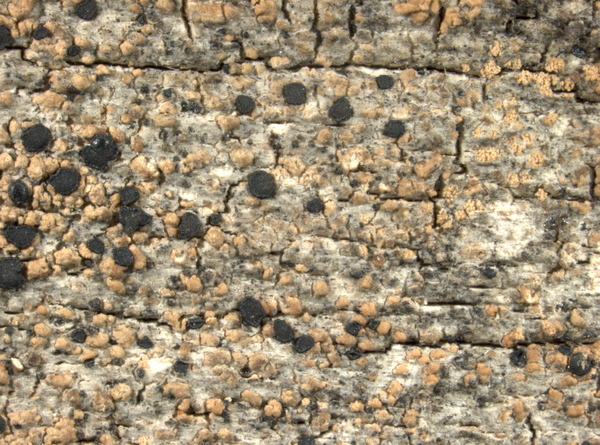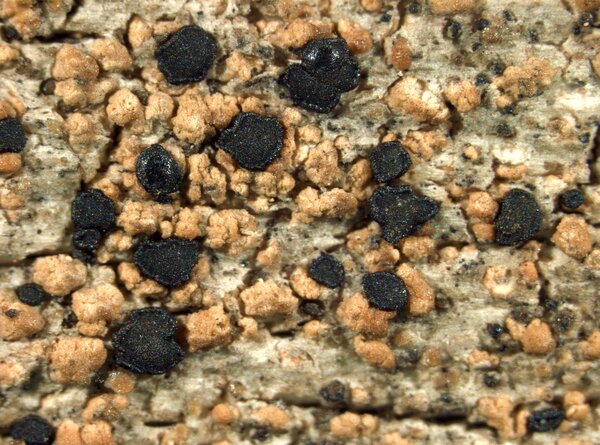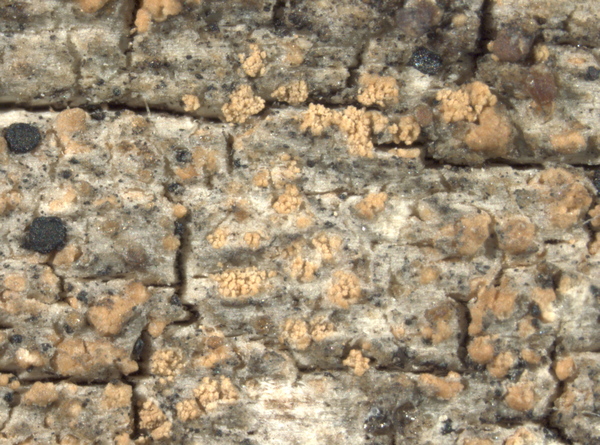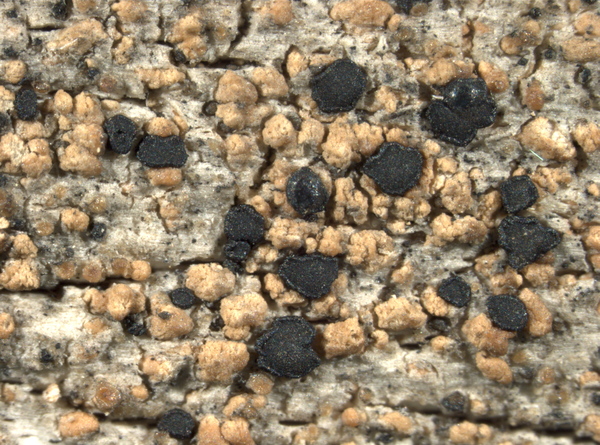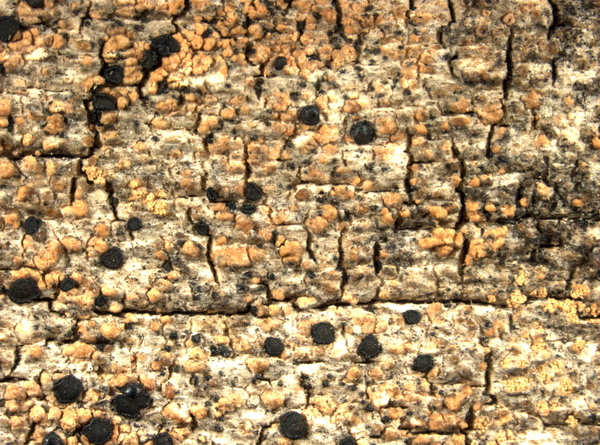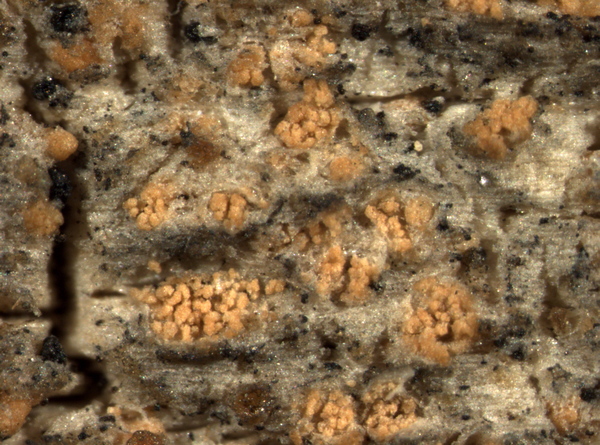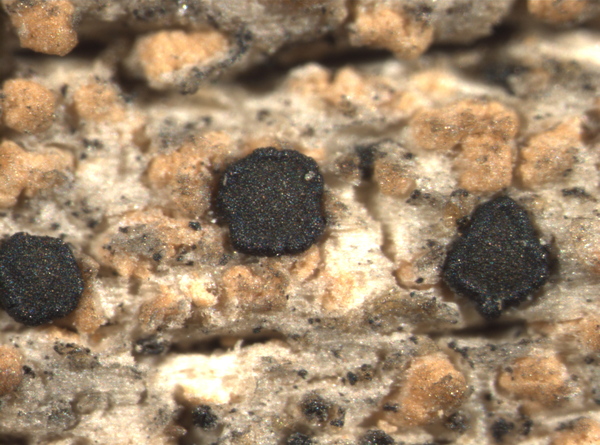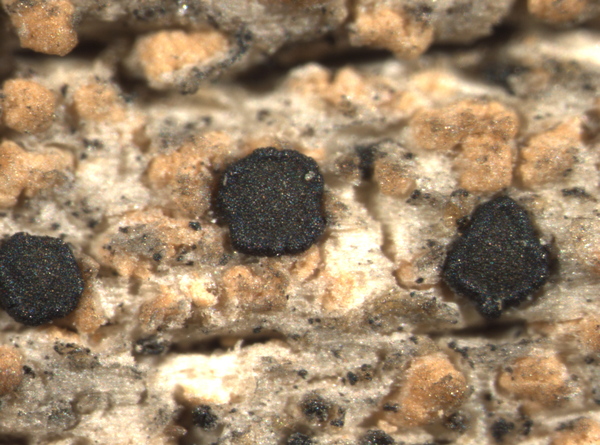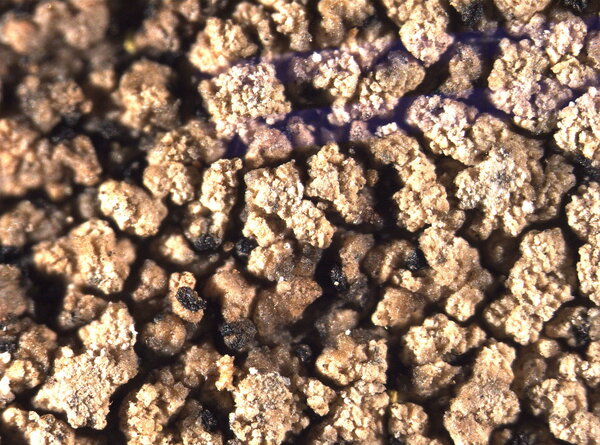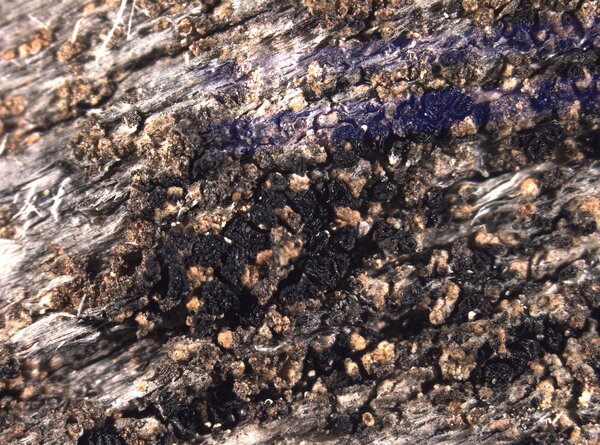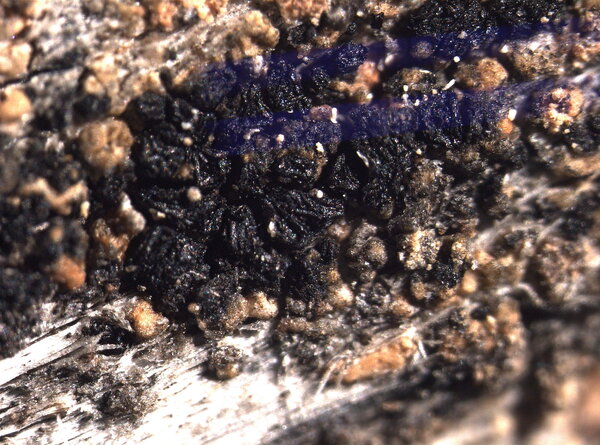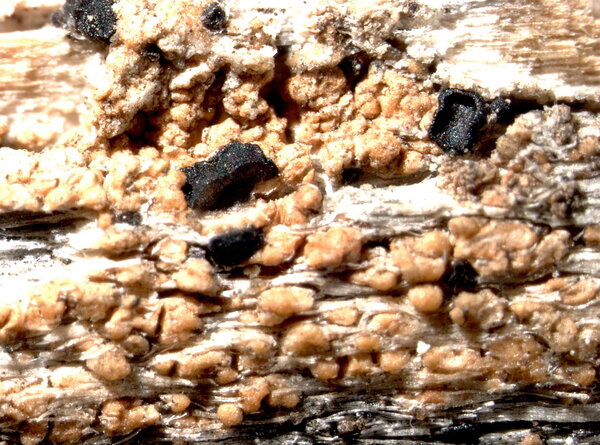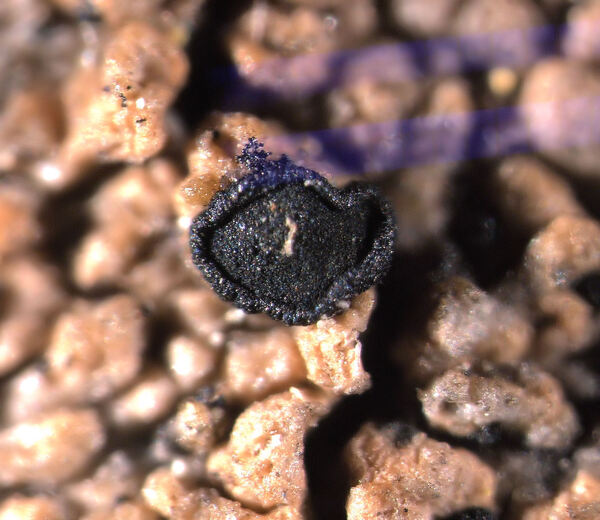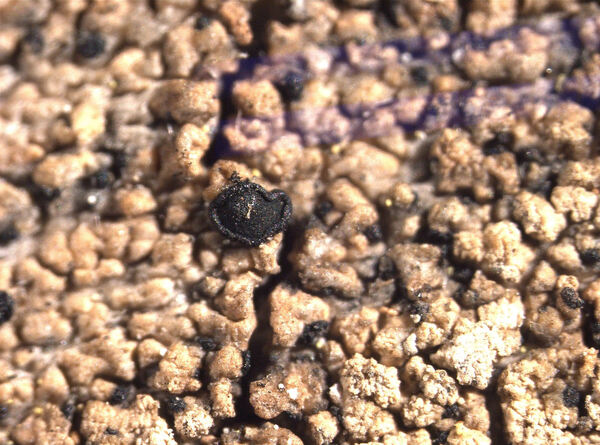Pycnora praestabilis (Nyl.) Hafellner
in Hafellner & Türk, Stapfia, 76: 156, 2001. Basionym: Lecidea praestabilis Nyl. - Flora, 57: 13, 1874.
Synonyms: Hypocenomyce praestabilis (Nyl.) Timdal; Hypocenomyce xanthococca auct. non (Sommerf.) P. James & Gotth. Schneid.?; Lecidea xanthococca auct. non Sommerf.
Distribution: N - Frl (Tretiach 2015r), Ven (Ravera & al. 2025), TAA (Nascimbene & al. 2007b), Lomb (Ravera & al. 2025), Piem (Ravera & al. 2025), Lig (Ravera & al. 2025). S - Cal.
Description: Thallus crustose, episubstratic, areolate, the areoles scattered to crowded, up to 1(-1.5) mm wide, adnate, weakly convex, pale grey to yellowish brown, dull. Upper cortex up to 15 µm thick, of thin-walled hyphae. Apothecia lecideine, black, epruinose, up to 1.1 mm across, with a flat disc and a prominent, regular or slightly flexuose proper margin. Proper exciple of closely conglutinated hyphae, brownish black in outer part, dark brown within, K+ violet, N-; epithecium dark brown, without crystals, K+ violet, N-; hymenium colourless, 55-70 µm high; paraphyses sparingly branched and anastomosing, the apical cells hardly swollen; hypothecium brown. Asci 8-spored, broadly clavate, with a well developed, amyloid tholus containing an ocular chamber and a broad axial mass, Lecanora-type. Ascospores 1-celled, hyaline, broadly to narrowly ellipsoid, 7-11.5 x 3-4.5 µm. Pycnidia usually abundant, up to 0.3 mm across, sessile, black, with a dirty green wall reacting K-, N+ violet. Conidia ellipsoid, 3-5.5 x 1.5-2.5 µm, 2-2.7 times as long as wide. Spot tests: cortex and medulla K+ yellow, C+ red, KC+ red, P+ yellow, UV-. Chemistry: alectorialic acid.Note: on wood, more rarely on the bark of conifers in the mountains. The record from Calabria (Nimis 1993: 321) needs confirmation.
Growth form: Crustose
Substrata: bark and lignum
Photobiont: green algae other than Trentepohlia
Reproductive strategy: mainly asexual, by soredia, or soredia-like structures (e.g. blastidia)
Commonnes-rarity: (info)
Alpine belt: absent
Subalpine belt: rare
Oromediterranean belt: absent
Montane belt: very rare
Submediterranean belt: absent
Padanian area: absent
Humid submediterranean belt: absent
Humid mediterranean belt: absent
Dry mediterranean belt: absent

Predictive model
Herbarium samples


P.L. Nimis; Owner: Department of Life Sciences, University of Trieste
Herbarium: TSB (5265)
2002/05/17
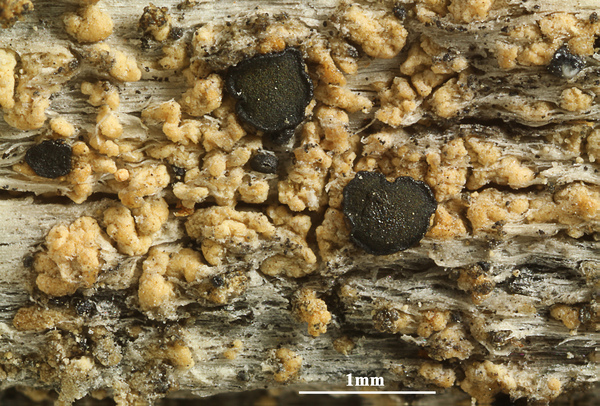

Felix Schumm - CC BY-SA4.0
[20893], Austria. Kärnten, Eastern Alps, Styrian Fringe Mountains, Koralpe, 12.6 km NE of the centre of Wolfsberg, 100 m WNW of the summit cross of Bärofen, 46°53'25'' N, 14°59'30'' E, 1710 m, on snags of Larix decidua. Leg. J. Hafellner (no 70788) & L. Muggia, 25.6.2006, det. J. Hafellner. DUPLA GRAECENSIA LICHENUM NR. 1173.
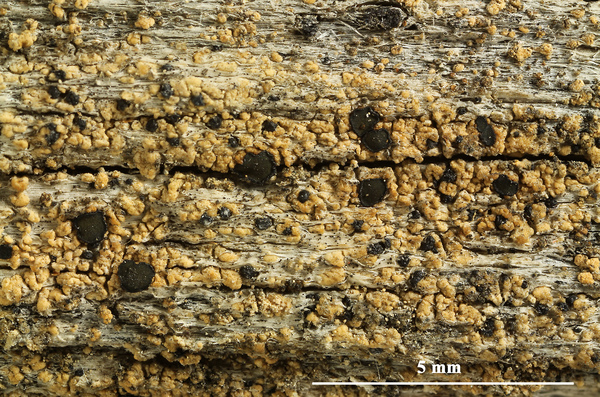

Felix Schumm - CC BY-SA4.0
[20893], Austria. Kärnten, Eastern Alps, Styrian Fringe Mountains, Koralpe, 12.6 km NE of the centre of Wolfsberg, 100 m WNW of the summit cross of Bärofen, 46°53'25'' N, 14°59'30'' E, 1710 m, on snags of Larix decidua. Leg. J. Hafellner (no 70788) & L. Muggia, 25.6.2006, det. J. Hafellner. DUPLA GRAECENSIA LICHENUM NR. 1173.
Growth form: Crustose
Substrata: bark and lignum
Photobiont: green algae other than Trentepohlia
Reproductive strategy: mainly asexual, by soredia, or soredia-like structures (e.g. blastidia)
Commonnes-rarity: (info)
Alpine belt: absent
Subalpine belt: rare
Oromediterranean belt: absent
Montane belt: very rare
Submediterranean belt: absent
Padanian area: absent
Humid submediterranean belt: absent
Humid mediterranean belt: absent
Dry mediterranean belt: absent

Predictive model
| Herbarium samples |


P.L. Nimis; Owner: Department of Life Sciences, University of Trieste
Herbarium: TSB (5265)
2002/05/17


Felix Schumm - CC BY-SA4.0
[20893], Austria. Kärnten, Eastern Alps, Styrian Fringe Mountains, Koralpe, 12.6 km NE of the centre of Wolfsberg, 100 m WNW of the summit cross of Bärofen, 46°53'25'' N, 14°59'30'' E, 1710 m, on snags of Larix decidua. Leg. J. Hafellner (no 70788) & L. Muggia, 25.6.2006, det. J. Hafellner. DUPLA GRAECENSIA LICHENUM NR. 1173.


 INDEX FUNGORUM
INDEX FUNGORUM
 GBIF
GBIF
 DOLICHENS
DOLICHENS

